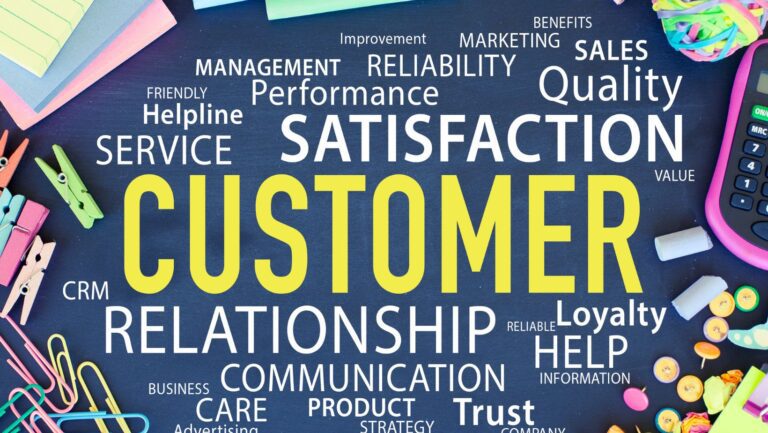105+ Regular and Unique Business Skills From A to Z For Your Small Business

Running a small business requires a wide range of skills and abilities. From accounting to marketing, various areas of knowledge can help a firm prosper.
A to Z, we have compiled a list of 105+ regular and unique business skills that can benefit any small business owner.
Whether you are just starting or looking to grow your business, honing these skills can help you achieve your goals and stay ahead of the competition.
1:Accounting
Accounting involves the process of recording, classifying, and summarizing financial transactions to provide information that is useful in making business decisions. This can include tasks such as preparing financial statements, reconciling bank statements, and calculating taxes.
Every business needs to measure inflow/outflows to gauge where their business is heading, with key performance indicators (KPIs), a business can see a snapshot in time for their business.
2: Accuracy
Accuracy refers to the ability to produce work that is free of errors or mistakes. It involves paying close attention to detail and double-checking one’s work to ensure that it is correct.
This critical skill. Errors in work can reflect badly on a business whether it is from details on a website to grammar in a document. Accuracy is key to setting your business above the rest, and showing you are attentive to the intricate details.
3: Active Learning
Active learning is the process of engaging with new information or tasks in a way that requires mental effort and participation. This can involve asking questions, seeking clarification, and actively applying new knowledge to better understand and remember it.
We cannot know everything, so constantly growing your skillset and knowing how to get the job done will be critical to your business success. Asking questions, to drill down the root causes of any problem, will help formulate a better solution.
4: Adaptability
Adaptability is the ability to adjust to new situations or challenges quickly and easily. It involves being flexible and open to change and being able to think on one’s feet to find solutions to problems.
Adaptability is key to anything in life and especially for business. Being able to pivot, learn, and adapt to problems that arise throughout a business’s life cycle.
5: Assertiveness

Assertiveness is the ability to express one’s own needs and opinions directly and confidently, without being aggressive or passive. It involves standing up for oneself and being able to communicate one’s thoughts and feelings effectively.
Now assertiveness does not mean being a jackass, but one does need to set appropriate boundaries, to ensure operations are being done in the most effective manner in which the business operates.
6: Attention to Detail
Attention to detail refers to the ability to carefully observe and analyze information and to catch and correct errors. It involves paying close attention to the small details in a task and being thorough and meticulous in one’s work.
This skill may be a little different than accuracy, because of the scope of the skill. Paying attention to detail can entail everything about your business, from the forms you use to the operations of your customer service. The saying “the devil is in the details” or was it God, either way, the truth and simplicity of any business operation are in the details.
7: Audio Production
Audio production involves creating, recording, and editing audio content, such as music, podcasts, or sound effects. It requires an understanding of audio equipment and software, as well as an ability to manipulate sound to achieve the desired result.
This would be an odd skill in business, but everything on the Internet being audio, visual, and writing, it is good for a business owner to know at least the basics of audio. Think of YouTube, podcasts, and Loom videos; each one encompasses using audio in their productions, so it would be good for a business owner to know the basics even if it is to delegate these operations out.
8: Budgeting

Budgeting involves creating a plan for managing and allocating financial resources. It involves setting financial goals, forecasting income and expenses, and monitoring and controlling spending to achieve those goals.
Budgeting can make or break a business, and accounting is the cornerstone of any business. Not only does it help with cash flow but sets up a foundation of best practices within any business.
9: Business Development
Business development involves identifying and pursuing opportunities to grow a business. This can include tasks such as finding new customers, entering new markets, and developing new products or services.
Everything develops, the first iteration of an idea or product will not be the final version. This process has come to be known as the Lean Startup Strategy which has the premise of Build-Measure-Learn. A product, service, or operation is built. Key metrics are applied to it, and then an owner can learn which way the product, service, or operation can be better.
10: Coaching
Coaching involves providing guidance, support, and feedback to help someone develop their skills and reach their goals. It involves helping people identify their strengths and areas for improvement and providing them with the tools and resources they need to succeed.
Coaching is a great skill to learn not only can you help people be a better version of themselves, but it also makes you better. There is a common saying, ” if you want to truly learn something, then teach it”. By being a coach, you will not only have better employees and the people you interact with but you will have a better version of yourself.
11: Collaboration

Collaboration involves working with others towards a common goal. It involves good communication and the ability to work well in a team, as well as being able to contribute unique skills and ideas to the group.
If there is a project to one collaboration is the key to its success. In business, there are many projects and work to be done, and as a business owner you may think to take on all the responsibility on yourself, but for a business to grow and scale, collaboration is the key.
12: Communication
Communication is the exchange of information, ideas, or thoughts through speaking, writing, or using other mediums. It involves the ability to convey information, as well as actively listen and understand the perspectives of others.
13: Community Involvement
Community involvement refers to the act of participating in and contributing to the well-being of one’s community. This can include volunteering, participating in local events, or supporting community initiatives.
14: Compliance
Compliance refers to the act of following rules, regulations, and laws that apply to a particular field or industry. It involves understanding and adhering to the necessary standards and requirements to operate legally and ethically.
15: Conflict Resolution
Conflict resolution involves finding a way to peacefully resolve disputes or differences of opinion. It involves good communication skills and the ability to understand and address the needs and concerns of all parties involved.
16: Content Creation
Content creation involves creating and producing written, visual, or multimedia content for a specific audience. It requires an understanding of the needs and interests of the target audience, as well as the ability to craft engaging and informative content.
Business Skills

17: Creativity
Creativity refers to the ability to generate new and innovative ideas or approaches. It involves using imagination and originality to produce unique solutions to problems or challenges, and the ability to think creatively. Creativity can be applied in a variety of contexts, including art, business, science, and more.
18: Critical Thinking
Critical thinking involves the ability to think analytically and objectively and to evaluate arguments and evidence to make informed decisions. It involves being able to ask probing questions, analyze and synthesize information, and draw logical conclusions.
19: Cross-cultural communication
Cross-cultural communication involves the ability to communicate effectively with people from different cultural backgrounds. It requires an understanding of cultural differences and the ability to adapt one’s communication style and language to effectively convey a message.
20: Cultural Sensitivity
Cultural sensitivity refers to the ability to understand and respect the beliefs, values, and customs of other cultures. It involves being aware of and sensitive to cultural differences and being open to learning about other cultures.
21: Curiosity
Curiosity is a desire to learn and explore new ideas and concepts. It involves being open-minded and interested in the world around us and being willing to ask questions and seek out new information.
22: Customer Service
Customer service involves providing assistance and support to customers before, during, and after a purchase. It requires good communication and problem-solving skills, and the ability to build rapport with customers and resolve any issues or concerns they may have.
23: Data Analysis

Data analysis involves the process of collecting, organizing, and analyzing data to draw conclusions and inform decision-making. It requires strong analytical skills, as well as the ability to use software and tools to manipulate and visualize data.
24: Data security
Data security refers to the measures taken to protect data from unauthorized access or misuse. It involves implementing processes and technologies to safeguard data and prevent data breaches or cyber-attacks.
25: Decision-making
Decision-making involves the process of choosing a course of action from a range of options. It requires the ability to evaluate the pros and cons of different options, consider the potential risks and rewards, and to choose the most appropriate course of action.
26: Diversity and Inclusion
Diversity and inclusion refer to the inclusion of people with a wide range of backgrounds, experiences, and perspectives in an organization. It involves valuing and promoting diversity in all aspects of the organization and creating a welcoming and inclusive environment for all employees.
27: E-commerce
E-commerce refers to the buying and selling of goods and services online. It involves creating and managing an online store and using digital marketing and payment processing tools to facilitate online transactions.
28: Editing
Editing involves reviewing and revising written or visual content to improve its clarity, accuracy, and effectiveness. It requires an eye for detail and the ability to identify and correct errors or inconsistencies.
29: Emotional Intelligence
Emotional intelligence refers to the ability to understand and manage one’s own emotions, as well as the emotions of others. It involves being self-aware and self-regulation and being able to use emotions to inform decision-making and communication.
30: Empathy
Empathy is the ability to understand and share the feelings of others. It involves being able to recognize and respond to the emotions of others, and to show understanding and compassion towards their perspective.
31: Environmental Sustainability
Environmental sustainability refers to the practice of preserving natural resources and ecosystems for future generations. It involves adopting practices and policies that minimize negative environmental impacts and promote the long-term health and well-being of the natural world.
32: Ethical Conduct
Ethical conduct refers to acting morally and responsibly, by the values and principles of an organization or industry. It involves being honest, transparent, and fair in one’s interactions with others, and acting in the best interests of all stakeholders.
33: Execution

Execution refers to the ability to turn ideas or plans into action. It involves the ability to implement and follow through on tasks and projects, and to achieve desired results.
34: Finances
Finances refer to the management of financial resources, such as money, investments, and credit. It involves tasks such as budgeting, forecasting, and analyzing financial data to make informed financial decisions.
35: Flexibility
Flexibility refers to the ability to adapt to changing circumstances or requirements. It involves being open to new ideas and approaches and being able to adjust one’s plans or strategies as needed.
36: Follow Through
Follow-through refers to the ability to see tasks or projects through to completion. It involves being organized and disciplined and being able to stay focused and committed to achieving desired results.
37: Global Awareness
Global awareness refers to an understanding of and sensitivity to global issues and events. It involves being knowledgeable about the world and its cultures and being able to think critically about global affairs.
38: Goal Setting
Goal setting involves the process of setting specific, measurable, achievable, relevant, and time-bound (SMART) goals to achieve desired outcomes. It requires the ability to identify and prioritize goals and to develop a plan for achieving them.
39: Graphic Design
Graphic design involves the creation of visual content, such as graphics, logos, and layouts, for a variety of media. It requires an understanding of design principles, as well as the ability to use design software and tools to create visually appealing and effective content.
40: Influencing
Influencing involves the ability to persuade or influence others to adopt a particular belief or course of action. It requires the ability to present a compelling argument and to build relationships with others to influence their decisions.
41: Innovation
Innovation refers to the introduction of new ideas or approaches. It involves being creative and open to new ideas and being able to develop and implement innovative solutions to problems or challenges.
42: Interpersonal

People skills, social skills, and social intelligence are all terms used to describe interpersonal skills. They entail accurately receiving and understanding the signals sent by others in order to generate effective reactions. People demonstrate their interpersonal abilities all the time by interacting with others.
43: Intellectual Property
Intellectual property refers to the legal rights that protect the creations of the mind, such as inventions, literary and artistic works, and symbols, names, and images. It involves understanding and protecting these rights and being aware of and respecting the intellectual property of others.
44: Intercultural Competence
Intercultural competence is the ability to communicate and interact effectively with people from diverse cultural backgrounds. It involves being aware of and sensitive to cultural differences and being able to adapt one’s communication and behavior appropriately.
45: Joint Ventures
Joint ventures involve two or more businesses coming together to pursue a specific project or goal. They often involve sharing resources, risks, and profits to achieve a common objective.
46: Language Learning
Language learning involves acquiring the ability to speak, read, and write in a new language. It involves understanding the grammar and vocabulary of the language, as well as the cultural and social norms of the people who speak it.
47: Leadership
Leadership involves the ability to inspire and guide others toward a common goal. It involves excellent communication skills, the ability to motivate and delegate tasks, and the ability to make sound decisions.
48: Legal Issues
Legal issues refer to the various laws, regulations, and rules that apply to a particular field or industry. Understanding and navigating legal issues require knowledge of the relevant laws and regulations, as well as the ability to interpret and apply them.
49: Marketing

Marketing involves identifying and promoting products or services to potential customers. It involves understanding consumer needs and behavior and using various tactics, such as advertising and sales, to increase demand for a product or service.
50: Mentorship
Mentorship involves providing guidance and support to help someone develop their skills and reach their goals. It involves sharing knowledge and experience and helping someone identify and overcome challenges.
51: Mergers and Acquisitions
Mergers and acquisitions involve the combination or acquisition of two or more businesses. They can involve a range of activities, such as due diligence, negotiation, and integration, and require strong financial and strategic planning skills.
52: Negotiation
Negotiation involves the process of reaching an agreement or settlement through discussion and compromise. It involves the ability to communicate one’s own needs and interests, as well as being able to listen and understand the perspectives of others.
Business Skills

53: Networking
Networking involves building and maintaining relationships with other professionals to exchange information, ideas, and opportunities. It involves being proactive and engaging with others and being able to build rapport and establish trust.
54: Online Presence
An online presence refers to an individual or business’s presence on the internet, typically through a website or social media platforms. It involves actively managing and maintaining an online presence to engage with customers and stakeholders and to share information and content.
55: Partnerships
Partnerships involve two or more parties working together towards a common goal. They can involve sharing resources, risks, and profits, and often require effective communication and collaboration skills.
56: Perseverance
Perseverance is the ability to continue working towards a goal despite setbacks or challenges. It involves being resilient and determined, and not giving up in the face of obstacles.
57: Personal development
Personal development refers to the ongoing process of improving oneself and one’s skills. It can involve activities such as learning new things, setting goals, and seeking feedback to grow and improve as a person.
58: Persuasion
The process of persuading people to change their attitudes, beliefs, or behaviors is known as persuasion. Persuasion is utilized in a wide range of situations, including commerce, advertising, politics, and personal relationships. The purpose of persuasion is to persuade people to take a specific action or adopt a specific point of view.
Persuasion employs a wide range of techniques, such as logical arguments, emotional appeals, and social proof. Businesses and individuals can influence the behavior of others and achieve their goals by utilizing effective persuasion techniques.
- Persuasion is a necessary ability for professionals in many industries, including sales, marketing, and public relations.
- Persuaders who are successful understand their audience, tailor their message to meet their needs, and communicate clearly and compellingly.
- Persuasion is a sophisticated and dynamic process that involves meticulous preparation, implementation, and evaluation.
- Persuasion experts are highly appreciated for their capacity to influence the behavior of others and achieve their objectives.
59: Planning
Planning involves the process of creating a strategy or course of action to achieve a specific goal. It involves setting objectives, identifying resources and constraints, and creating a step-by-step action plan to reach the desired outcome.
60: Presentation skills

Presentation skills refer to the ability to effectively communicate information to a group of people through verbal and visual means.
It involves being able to structure and deliver a clear and engaging message, as well as using visual aids and other tools to support the presentation.
61: Prioritization
Prioritization involves the ability to identify and focus on the most important tasks or goals, and to allocate time and resources accordingly.
It involves being able to evaluate the relative importance of different tasks and prioritize them accordingly.
62: Problem-solving
Problem-solving involves the ability to identify and solve problems effectively and efficiently. It involves being able to gather and analyze information, generate potential solutions, and choose the most appropriate course of action.
63: Professionalism
Professionalism refers to the conduct and behavior expected of a professional in a particular field. It involves being competent and skilled in one’s work, as well as being ethical and respectful in one’s interactions with others.
64: Project Management

Project management involves planning, organizing, and overseeing the execution of a specific project or goal. It requires strong communication, leadership, and problem-solving skills, as well as the ability to manage resources and meet deadlines.
65: Public Speaking
Public speaking involves delivering a speech or presentation to a group of people. It requires confidence, poise, and the ability to engage and connect with an audience, as well as the ability to structure and deliver a clear and concise message.
66: Quality Control
Quality control refers to the process of ensuring that a product or service meets certain standards of quality. It involves inspecting and testing products or services, identifying, and correcting defects, and implementing processes to prevent future errors.
67: Reputation Management
Reputation management involves actively managing and improving the public perception of a person or business. It can involve activities such as monitoring online reviews and comments, responding to customer complaints, and promoting positive news and information about the business.
68: Research
Research involves the systematic investigation of a subject to discover current information or gain a better understanding of it. It can involve tasks such as collecting data, analyzing sources, and drawing conclusions based on the findings.
69: Resilience
Resilience is the ability to recover from setbacks or challenges and bounce back from adversity. It involves being able to adapt and persevere in the face of challenges and maintain a positive outlook despite difficult circumstances.
70: Resource Allocation
Resource allocation involves the process of determining how to best use available resources, such as time, money, and personnel, to achieve a specific goal. It involves making trade-offs and prioritizing the use of resources to maximize efficiency and effectiveness.
71: Risk Management

Risk management involves the identification, assessment, and prioritization of risks to minimize the impact of potential threats to an organization. It involves developing strategies to mitigate or eliminate risks and to prepare for and respond to unexpected events.
72: Sales
The practice of persuading and influencing potential consumers to buy a product or service is known as sales. Sales are critical functions in any firm since they immediately contribute to revenue and profitability. Successful salespeople are adept at finding and understanding customer needs, explaining the value of their product or service, and closing deals.
Prospecting, lead creation, relationship development, and negotiation are all strategies used in sales. Businesses may boost customer acquisition, improve customer retention, and ultimately drive business growth by employing efficient sales strategies. Sales is a dynamic and ever-changing industry, with new technology and strategies appearing all the time.
Sales professionals that are successful must keep up with the newest trends and be willing to adapt to changing market conditions. Sale is an important role in any firm, and individuals who thrive at it are highly appreciated for their ability to drive revenue and profitability.
73: Search Engine Optimization (SEO)
SEO optimizes a website or online content to improve its ranking in search engine results. It involves using various tactics, such as keyword research and link building, to increase the visibility and accessibility of a website to search engines.
74: Social Media Management

Social media management involves the creation and maintenance of a business’s social media presence. It involves developing a social media strategy, creating, and scheduling content, and engaging with followers on social media platforms.
75: Social Responsibility
Social responsibility refers to the ethical obligation of individuals and organizations to consider the impact of their actions on society and the environment. It involves being mindful of the social and environmental consequences of one’s actions and taking steps to minimize any negative impacts. This can involve activities such as charitable giving, volunteering, and implementing sustainable business practices.
76: Training
Training involves providing instruction and guidance to help someone develop new skills or knowledge. It can involve one-on-one coaching or classroom-style teaching and may involve the use of various teaching methods and tools.
77: Video Production
Video production involves creating, filming, and editing video content. It requires an understanding of video equipment and software, as well as the ability to tell a compelling visual story through the use of sound, music, and imagery.
78: Writing
Writing involves the creation of written content, such as articles, reports, or stories. It requires the ability to structure and organize ideas, use clear and concise language, and tailor the message to the intended audience.
Business Skills

79: Gamification
The technique of introducing game design ideas and mechanics into non-game environments to boost engagement and motivation is known as gamification. Gamification is applied in many fields, including education, healthcare, and marketing.
- Gamification aims to make non-game activities more enjoyable and engaging by introducing components like points, badges, and leaderboards.
- Gamification can also be used to encourage certain actions, such as the acquisition of new skills or the adoption of healthy habits.
- Businesses can utilize gamification to promote user engagement, improve learning outcomes, and ultimately drive business success.
- Gamification is well-suited to the technology business, where it is employed to generate entertaining and interactive user experiences.
- Gamification, on the other hand, can be used in any business or activity where improved engagement and incentives are needed.
80: Scenario planning
Scenario planning is a strategic planning strategy that entails developing several hypothetical scenarios to predict and prepare for future uncertainty. Scenario planning assists firms in better understanding the potential consequences of various future occurrences and developing plans to reduce risks and capitalize on opportunities.
Scenario planning is identifying major change drivers and developing believable scenarios based on these variables.
Businesses can acquire insights into anticipated future trends, identify areas of uncertainty and risk, and establish contingency plans to mitigate these risks by designing and assessing various scenarios.
Scenarios are utilized in many industries, including finance, energy, and healthcare.
81: Service design
The process of designing services that match the needs and expectations of users while also being efficient and profitable for the service provider is known as service design. Service design approaches the service delivery process holistically, considering all touchpoints and interactions that customers have with the service provider.
The purpose of service design is to deliver a consistent and gratifying customer experience while simultaneously making the service efficient and effective for the supplier. User research, prototyping, and testing are all techniques used in service design.
Businesses may improve customer satisfaction, increase productivity, and ultimately drive business success by leveraging service design. Healthcare, hospitality, and transportation are all businesses that use service design.
Businesses can develop a sustainable and lucrative business model that gives value to both the firm and its customers by evaluating the full-service delivery process and designing services that suit the demands of both customers and providers.
82: Behavioral Economics
Behavioral economics is a branch of economics that uses psychological insights to explain why people make particular economic decisions. It investigates how people’s irrational biases and heuristics influence their decision-making, frequently leading them to make bad decisions.
Behavioral economics emphasizes the relevance of understanding decision-making psychology and devising policies and interventions that take people’s cognitive biases into account.
Several practical applications of behavioral economics can be found in fields such as finance, healthcare, and public policy. Behavioral economics, for example, can be used to create retirement savings plans that encourage people to save more or to create treatments that promote good habits like exercise and healthy eating.
Businesses and politicians can build more effective policies and interventions that encourage better decision-making and enhance outcomes for individuals and society as a whole by harnessing behavioral economics principles.
83: Narrative Storytelling

Narrative storytelling is a way of communicating information by narrating a tale. Businesses may use narrative storytelling to engage with their consumers and communicate complicated ideas memorably and engagingly.
Stories help to make the content more accessible and intelligible by creating an emotional connection with the audience.
- Narrative storytelling entails developing a captivating story arc with a distinct beginning, middle, and end point, as well as employing descriptive language and images to bring the story to life.
- Narrative storytelling is used by businesses in a variety of circumstances, including marketing campaigns, brand tales, and employee training.
- Businesses may use narrative storytelling to strengthen their brand identity, boost engagement with their audience, and ultimately drive commercial success.
- A well-told narrative can leave an impression on the audience and serve to foster a stronger bond between the company and its consumers or employees.
84: Design Thinking
To address complicated challenges, design thinking is a problem-solving technique that promotes creativity, empathy, and teamwork,
Design thinking involves a process consisting of five steps: empathize, define, ideate, prototype, and test.
During the empathize stage, designers aim to understand the needs, behaviors, and motivations of the individuals they are designing for. This stage is critical in developing a deep understanding of the user and their perspective. Designers can gain valuable insights into how to create a solution that addresses the user’s needs and pain points by empathizing with them.
- Designers synthesize the empathy stage insights to define the problem they are attempting to solve in the define stage.
- Designers produce a wide range of alternative solutions to the problem during the ideate stage.
- Designers construct tangible representations of the solution to test and modify during the prototype stage.
- Design thinking is used to solve complicated challenges in a range of fields, including technology, healthcare, and education.
Businesses may promote creativity, improve customer satisfaction, and ultimately drive business success by leveraging design thinking.
85: User experience (UX) design
The process of designing products, services, and experiences that fulfill the requirements and expectations of users is known as user experience (UX) design. Understanding the aims, interests, and behaviors of users and designing products and experiences that are intuitive, easy to use, and pleasurable are all part of UX design.
To guarantee that the product or experience satisfies the needs of the user, UX designers employ several tools and approaches, such as user research, prototyping, and testing.
UX design is applied across many areas, including technology, healthcare, and finance.
Businesses may increase customer happiness, and user engagement, and ultimately drive business success by embracing UX design.
A good user experience design is crucial to the success of a product or service because it influences the user’s perception of the brand and willingness to use the product or service again.
86: Growth hacking

Growth hacking is a marketing strategy that focuses on quick experimentation and data-driven marketing tactics to achieve rapid growth.
Growth hacking is the practice of rapidly acquiring new consumers and increasing income via the use of creative and inventive marketing methods.
Growth hacking is ideal for startups and early-stage enterprises because it helps them to test and iterate on marketing strategies rapidly and efficiently.
To swiftly attract new consumers and improve income, growth hackers employ a range of strategies like A/B testing, social media marketing, email marketing, and viral marketing.
Businesses that use growth hacking can achieve considerable growth in a short amount of time while still building a sustainable and successful business.
Growth hacking necessitates a thorough understanding of data analytics, as well as the capacity to conceive creatively and quickly implement marketing ideas.
87: Crowdsourcing
Crowdsourcing is obtaining needed services, ideas, or content by soliciting contributions from a large group of people, especially from the online community
88: Customer Journey Mapping
The practice of visualizing and analyzing the many touchpoints and interactions that a customer has with a business throughout their relationship is known as customer journey mapping.
- Customer journey mapping is used to obtain a better knowledge of the customer experience and discover areas for improvement.
- Customer journey mapping entails producing a visual depiction of the customer journey, encompassing all touchpoints and exchanges, as well as identifying the emotions and behaviors that customers exhibit at each stage of the trip.
- Businesses can obtain insights into the customer experience and discover opportunities for improvement by mapping out the customer journey.
- Consumer journey mapping is useful in many industries, including retail, hospitality, and healthcare.
- Businesses may optimize the customer experience, increase customer happiness, and ultimately drive business success by utilizing customer journey mapping.
89: Lean startup

Lean startup is a business and product development technique that stresses quick prototyping, experimentation, and continuous improvement.
The lean startup methodology is based on the idea that startups should focus on quickly developing a minimum viable product (MVP) and then testing it with real customers to gather feedback and iterate on the product.
This iterative process enables businesses to swiftly discover and address product faults while also making improvements based on user feedback.
The lean startup technique also highlights the significance of developing a scalable and viable business model.
The lean startup model is especially well suited to the technology business, where product development cycles are short and market conditions can change quickly.
Businesses can lower the risk of failure, raise their chances of success, and eventually develop a sustainable and lucrative firm by adopting the lean startup technique.
90: Business Model Innovation
Business model innovation is creating new and improved ways of doing business Visual facilitation – using visual aids to facilitate communication and understanding in meetings and workshops
91: Service Blueprinting
The process of mapping out the customer journey and the different touchpoints and interactions between the customer and the service provider is known as service blueprinting.
The purpose of service blueprinting is to discover and optimize opportunities to improve the customer experience and service delivery.
Service blueprinting entails identifying the many steps in the service delivery process, mapping out customer interactions and touchpoints, and identifying service providers’ roles and responsibilities.
Service blueprinting considers the physical environment as well as the technology employed in the service delivery process.
Businesses can acquire a better knowledge of the customer experience and discover areas for improvement by developing a service plan..
100: Agile Project Management
Agile project management is a method of managing projects that stresses flexibility, collaboration, and client satisfaction. Agile project management is most commonly used in software development projects, but it can also be used in other industries and projects.
- Agile project management entails breaking the project down into smaller iterations called sprints, each of which delivers a working product increment.
- The team collaborates closely with the customer to prioritize features and requirements, and the project is constantly adapted to meet changing needs and specifications.
- With regular team meetings and customer feedback loops, agile project management stresses communication, collaboration, and continual development.
- Through boosting visibility, adaptability, and client satisfaction, agile project management can boost project success rates.
- It also enables quicker time-to-market and greater responsiveness to change market conditions.
101: User-centered design
User-centered design (UCD) is a design method that focuses on understanding users’ wants, goals, and behaviors to develop meaningful, usable, and desired products, services, and experiences.
UCD include gathering insights about users through research, producing prototypes and testing them with people, and iterating on the design depending on user feedback.
UCD’s mission is to provide products and experiences that are intuitive, simple to use, and suit the demands of consumers.
UCD is used to produce goods and services that are personalized to the needs of customers in a range of industries, including technology, healthcare, and education.
102: Behavioral Design
Behavioral design is a design technique that uses behavioral economics and psychology to affect human behavior. It entails creating products, services, and experiences that encourage people to make better decisions or take desired actions.
The goal of behavioral design is to comprehend and control the unconscious biases and heuristics that govern human decision-making. Designers may build more interesting, effective, and user-friendly products and experiences by employing ideas such as social proof, loss aversion, and choice architecture.
Behavioral design is used to encourage positive behaviors and discourage negative ones in a variety of contexts, including healthcare, finance, and marketing.
A healthcare app, for example, that employs reminders and gamification to urge patients to take their prescriptions regularly is an example of behavioral design in action.
Businesses can improve customer experiences, increase user engagement, and ultimately drive business growth by leveraging behavioral design.
103: Customer Analytics

Customer analytics is the collection, analysis, and interpretation of customer data to acquire insights into their behavior, preferences, and needs. This data is then used to create focused marketing campaigns, improve customer experiences, and fuel corporate growth.
Businesses can now gather and process vast amounts of customer data from multiple sources, such as social media, website analytics, customer feedback, and transactional data, thanks to the increasing availability of big data and advanced analytics tools.
Businesses can gain a better understanding of their customers, anticipate their needs, and deliver personalized and relevant experiences that foster loyalty and drive revenue by leveraging customer analytics.
104: Emotional Branding
Emotional branding is a marketing strategy that aims to establish an emotional bond between a company and its customers.
To build a long-lasting relationship with customers, the goal is to create a brand identity that evokes positive emotions such as trust, loyalty, and happiness.
Emotional branding is concerned with developing a distinct brand story that resonates with the target audience and communicates the business’s values, beliefs, and mission.
This can be accomplished via a variety of marketing channels, such as advertising, social media, and experiential marketing.
Businesses can differentiate themselves from competitors and build a strong brand identity that is tough to imitate by employing emotional branding. Emotional branding can promote customer engagement, brand recognition, and, eventually, revenue and profitability.
105: Predictive Analytics
Predictive analytics is a type of advanced analytics that employs data, statistical algorithms, and machine learning approaches to predict future outcomes based on past data. It entails examining massive datasets to find patterns and links that can be utilized to forecast future events or behaviors.
Predictive analytics is used to forecast future trends, optimize business processes, and improve decision-making in a variety of industries, including finance, healthcare, marketing, and manufacturing.
Predictive analytics is commonly used for customer attrition prediction, fraud detection, demand forecasting, and risk management. Businesses can gain a competitive advantage by using predictive analytics to make data-driven decisions that increase efficiency, cut costs, and improve customer satisfaction.
Final Thoughts!

These 105+ regular and unique business skills cover a wide range of areas that are critical for any small business owner to succeed.
From accounting and budgeting to marketing and customer service, countless skills can help a business thrive.
Small business owners can gain a competitive advantage, improve their operations, and achieve their goals by honing these skills.
Whether you are just starting or looking to take your company to the next phase of development, investing in these skills can pay dividends in the long run. With dedication, hard work, and a willingness to learn, any small business owner can master these skills and build a successful business.
Bio:

Ronnie Patterson
Ronnie Patterson, founder of MagnÜron, is a multifaceted entrepreneur with a diverse background in music, electronics engineering, and engineering management. Drawing on experience across various industries, He offers expertise in SEO, operations, and strategy to help businesses thrive. Possessing a unique perspective and unwavering commitment to collaboration, and ideal partner for growth and success.






